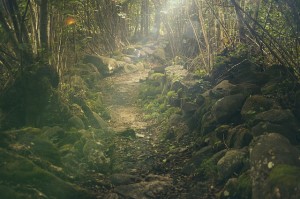We are not unbreakable
When I was in college, I had a professor who often began class with a ritual. He’d shuffle to the front of the room and reach inside his tweed sportscoat to retrieve a folded strip of newspaper. Then he’d carefully unfold it, adjust his glasses and start reading in his signature monotone delivery that always reminded me of the cartoon character Droopy Dog. 
Each news clip told a different story, but the overarching theme remained the same. The report detailed how someone who was about our age – late teens or early twenties – suffered an untimely death or life-altering injury after making a dumb decision. It was usually something along the lines of “19-year-old student killed by oncoming train while attempting to fry eggs on hot tracks.”
After reading the news clip, the white-haired professor would fold the strip and return it to his pocket while saying this one line that ended each of his report recitations: “There are plenty of ways to get killed in this world without going to look for one.” That was it. No lecture. No admonishments. Just one simple fact. Then he’d move on to the literature lecture.
I don’t know how my classmates felt about this quirky little ritual, but it stuck with me. I enjoyed the way he was so annoyed by foolishness. And in his own way, he was doing a public service announcement for a group of people who’d just flown out of their parents’ nest and straight into a quagmire of poor impulse control. He wanted us to know we weren’t as invincible as our egos would have us believe. Maybe he read us some of the most morbid parts of the newspapers in hopes he wouldn’t see one of his own students in those same reports.
The professor stopped teaching about 20 years ago, but I sometimes think about him when I watch the news. Lately there have been several reports about hikers who got lost in the woods and miraculously survived while rescue crews searched for them. While it’s always cause for celebration when the human instinct to survive perseveres through harrowing conditions, these types of reports often glamorize the survival and gloss right over the decisions that made the survival and rescue necessary.
A hiker who spent 17 days lost in the woods in Hawaii last May left her water bottle and cellphone in her car when she set out for a hike alone and got lost. Going alone into what can be a dangerous environment – without water, the right clothing, or a way to call for help – is just the kind of thing that would’ve exasperated my old professor. I can practically hear him delivering his monotone mantra: “There are plenty of ways to get killed in this world without going to look for one.”
Indeed, professor. Indeed.
One decision to leave a marked hiking trail triggered the need for a 17-day search involving thousands of people, a $50,000 reward for information, a search volunteer who was attacked by a wild boar, a helicopter crew, a broken leg, a torn muscle, and countless tears.
As I’ve said in previous columns, I’m an “indoorsy” kind of girl, so while I don’t understand the appeal of hiking to nowhere in the woods, some of my outdoorsy friends tell me it’s wonderful. But they also tell me there are clear safety rules about hiking, two of which are “don’t go alone and don’t leave the trail.”
To be fair, the U.S. Department of Agriculture’s website does say some trails in rugged areas “are not marked or signed.” But I would argue that those types of “trails” are appropriate only for wild boars and snakes, not humans. People should plan accordingly.
Nearly 25 years after finishing college, I don’t remember all the literature my professor taught me. But I do remember the lesson behind those news clips. Life is valuable. If you’re lucky enough to be living it, don’t squander it on a dumb risk.
Gwen Rockwood is a mom to three great kids, wife to one cool guy, a newspaper columnist and co-owner of nwaMotherlode.com. You can read more of Gwen’s work by getting her book on Amazon by clicking here.
